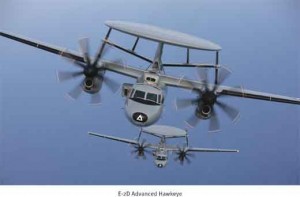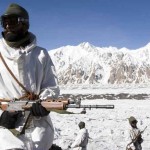Real Time Intelligence Gathering. The raid on May 02, 2011 was the culmination of a decade of specialised electronic and human intelligence gathering by a host of agencies. Amongst other agencies, the CIA was backed by the efforts of the National Geo-Spatial Agency which specialises in electronic imagery and maps and the National Security Agency which covertly watches and listens to communications around the globe. Osama bin Laden realised that America could tag him electronically if he used sophisticated communication devices and he therefore relied only on couriers to convey his orders. The couriers provided him a cocoon of safety and reduced the chances of detection but the courier had to use electronic communications to pass the messages leaving a chink in the armour for the Americans to exploit.
The United States used Enhanced Interrogation Techniques, an euphemism for sophisticated torture of detained Al Qaeda terrorist suspects to identify the Al Qaeda couriers trusted by Osama bin Laden. In 2002, interrogation of an Al Qaeda detainee had thrown up the name of a courier named, Al Kuwaiti but this appeared to be an assumed name. This fact was corroborated in 2003 during the interrogation of Khalid Sheikh Mohamed who was reputed to be the operational chief of the Al Qaeda. In 2004 another Al Qaeda prisoner told interrogators that Al Kuwaiti was close to Osama bin Laden but the CIA was not able to identify the courier. It took another three years of intensive action to identify Al Kuwaiti but they could not locate him. The CIA did not learn the courier’s real name till 2007 but it was only in 2010 that the Agency could find him and track him to the compound in Abbottabad.The compound and the fortified house had all the characteristics of a safe house but there was no confirmation of the presence of Osama bin Laden. US Intelligence may have initially discounted the presence of Osama bin Laden due to the location of the house in the midst of a army cantonment and Pakistan’s official stand denying the presence of Osama bin Laden in their country but yet the CIA agents rented a house in Abbottabad to monitor at close quarters the compound. The compound was also under surveillance by satellite and drones but the CIA was still not able to conclusively establish that Osama bin Laden was holed up there.
Does India have the means for coordinating the intelligence inputs from different agencies and the assets for real time intelligence gathering by satellites/ drones and agents on the ground so necessary for such an operation?
Intelligence Sharing The Joint Intelligence Committee of the Indian Government analyses data from the Intelligence Bureau, Research and Analysis Wing and the Intelligence Directorates of the Army, Navy and Air Force but this arrangement is not adequate in the war against terror. Post the Mumbai terrorist attack, setting up a National Intelligence Grid was mooted and in July 2009 the Union Home Minister said it would be set up by September 2009. After a protracted delay, in June 2011 the Cabinet Committee on Security accorded an in principle approval and the system is likely to on stream by 2014. The system is to provide information sharing between security/intelligence agencies, military intelligence and law enforcement agencies but inter-ministerial differences exist and these need to be resolved before the system can become fully operational and effective.When will India have a fully functional networked architecture for seamless integration and sharing of intelligence inputs from different agencies?
 Realistic Training The US Navy SEALs carried out extensive and realistic training in the United States and at Bagram airfield in Afghanistan before the mission. A replica of the suspected Osama bin Laden house was built and the attacking troops were fully familiar with the layout of the building. The SEALs knew the room likely to be occupied by Osama bin Laden and electronic and ground based surveillance had even established the number of occupants in the house.
Realistic Training The US Navy SEALs carried out extensive and realistic training in the United States and at Bagram airfield in Afghanistan before the mission. A replica of the suspected Osama bin Laden house was built and the attacking troops were fully familiar with the layout of the building. The SEALs knew the room likely to be occupied by Osama bin Laden and electronic and ground based surveillance had even established the number of occupants in the house.
Will Indian intelligence agencies be able to provide real time intelligence to the troops to enhance the quality of realistic mission specific training?
The R&AW lost the ability to gather human intelligence in Pakistan after Prime Minister IK Gujral wound up covert operations and dismantled R&AW assets…
In-country Operatives. In Pakistan there is a tacit understanding between the CIA and the Directorate for Inter Services Intelligence (ISI) and the two agencies share information from time to time. In the CIA’s hunt for Osama bin Laden, the capture of Khalid Sheikh Mohammed in a joint raid with CIA operatives provided a vital breakthrough. The R&AW lost the ability to gather human intelligence in Pakistan after Prime Minister IK Gujral wound up covert operations and dismantled R&AW assets in an effort to improve relations between India and Pakistan. Many of these operatives which had been built up over the years were eliminated by Pakistan. An Abbottabad type mission can be accomplished if “in country operatives” provide vital information or if Pakistan provides intelligence inputs of terrorists and their camps.Will the ISI and India’s Research and Analysis Wing (R&AW) ever achieve any level of cooperation in conducting anti-terrorist operations in Pakistan?
A Top-Down Approach. India can carry out an Abbottabad type of mission but the questions raised in the preceding paragraphs should be addressed if an acceptable degree of success is to be assured. India needs a clearly articulated strategic politico-military policy for such operations, an independent Joint Special Operations Command with integral land, sea and air assets permanently assigned to them, and an operational doctrine for Joint Special Operations. Comprehensive mission planning would be possible only if intelligence agencies provide real time intelligence and accurate inputs for operations. The force will be a deterrent when the enemy knows that India possesses the capability and will not hesitate to use the Special Forces for overt and covert operations.
The Special Forces of the Indian Army, Navy and Air Force constitute the end of the spear, but without political will, strategic direction and real time intelligence launching an Abbottabad type mission in the present environment would be a politico-military disaster.





All I learned from different websites across the internet was this. On all three major wars that happened between India and Pakistan, Pakistan Air Force(PAF) had upper hand over our Air Force(IAF). So how could the generals say that Indian Air Force is capable of flying below radar range into pakistan. We learn from 100’s of websites that the PAF is well trained and they have better pilots. One thing I read on the internet that during 1971 war a pilot took off in his aircraft below radar range into Karachi and destroyed two aircrafts that were standing there. One of them was an American’s who came to Pakistan to train the PAF Personnel. My question is how many pilots in our country are capable of doing that. It doesn’t matter we have SU 30 MKI or Rafale in future. It is the pilot skills that matters. But I concede that we are not in a dogfight era. But still pilot skill applies right?
I wonder for this reasons the IAF always orders for twin seated a/c’s instead of single seated a/c’s – that might make the job easier – where other country’s pilots are trained to tackle that single handedly. Just look how much longer the time past since the winner was announced in MMRCA deal. Still they are talking and talking and they will finish talking when the chinese are done with their J20 and pakistanis had their hands to J10s……
Commodore Mennon’s highlights the hard work that went into Operation Geronimo. The US success changed the political outcome for the region and America. The most important lesson for India is that it must develop such capabilities to punish Pakistani sponsored terrorism on India. Pakistan seemed to be conducting these acts of terrorism with a sense of impunity since they know that any retaliation from India will have to be in the form of a declared war. Indian leaders lack the back bone to even think along those lines because of the nuclear retaliation threat from Pakistan if there is a war. In essence Indian military might has been neuterred or made impotant. It is time, the military planners put their heads to gether and make it a priority to create India’s Gernimo as a potential threat to Pakistan should they think about embarking on a new project, namely, Mumbai 2.
Could not agree more that conducting operations like Operation Geronimo, CIA needed huge intelligence. It took them ten years for them to locate Bin Laden but they finally did. Pakistanis are scratching their head for the last one year who betrayed him. He had been well hidden, that is what ISI thought.
We have had bad leaders in India who thought that they could dismantle critical operational units of RAW to please Pakistan. Did it work?
No, it did not work. One of their unit staged Mumbai attack and India had no answer to that covert operation, other than starting a full scale war.